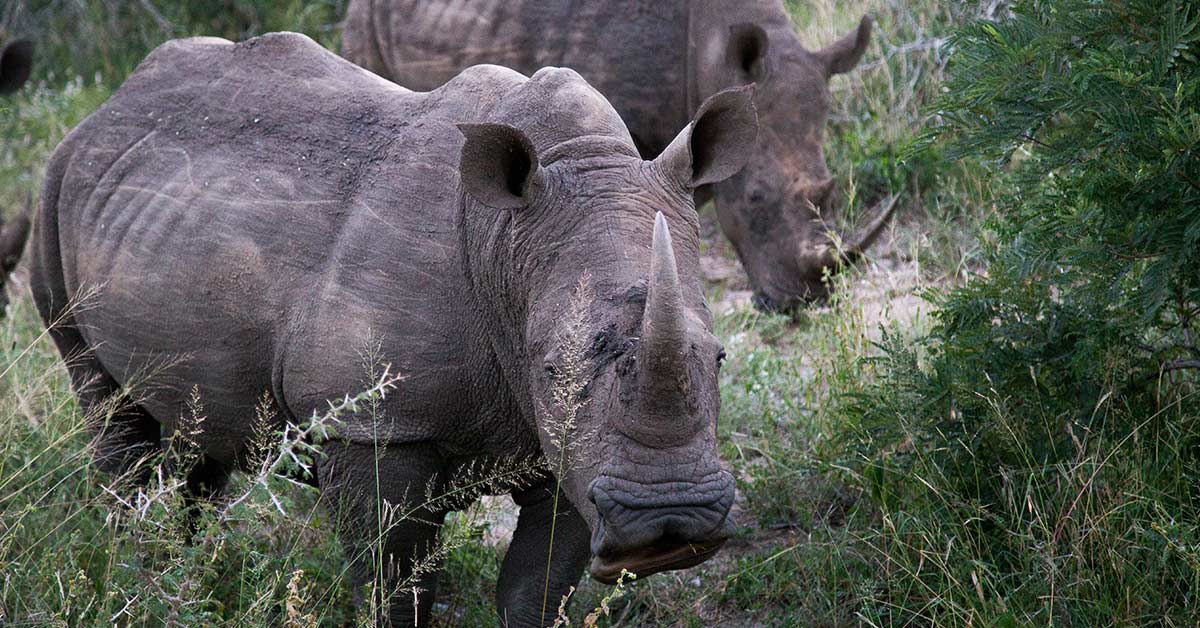In 2020, no rhinos were killed by poachers in Kenya, a feat that was unattainable for the past two decades. The efforts of conservationists have increased over the years, and especially during the worldwide pandemic.
“We are incredibly proud of that,” says Brigadier John Waweru. Two years ago, he had left the navy to become the Director-General of Kenya Wildlife Service (KWS). “It’s not just luck; it’s down to lots of hard work and dedication, especially in a pandemic year.”
It was also a successful year of reducing elephant poaching. In 2019, 350 elephants were poached, but in 2020, there were only 11, the lowest yearly record ever.
“I believe it is not a pipe dream to get Kenya’s poaching level to zero,” says Waweru.
Zero Rhino Deaths from Poachers in 2020
Increased instances of poaching rhinos and elephants threaten the species’ survival. It also encourages the harmful and illegal wildlife trade. These creatures’ deaths don’t just damage the populations and their natural ecosystem; they hurt the livelihood of the people who depend on tourism. [1]
When COVID-19 caused a 92 percent decrease in tourism in Kenya, many feared that poaching would increase because fewer people would take notice. Fortunately, these fears did not become a reality.
“While Covid continues to be a huge crisis, there was no poaching increase,” says Waweru. “Wildlife has flourished. Without tourists, I think poachers might think KWS had gone to sleep, but instead, we did the reverse and enhanced our efforts. [2]
“At the start of the pandemic, we found there was more interest in bushmeat poaching, but thanks to a sustained, aggressive campaign to help people understand it is not an alternative to beef, we were able to curtail it quickly.”
Waweru explains that education and encouraging the locals to protect wildlife is key to winning against the poachers. “To succeed, there must be very close interaction with the people that live alongside wildlife. The KWS provides training and support to help people to co-exist with wildlife and to understand their value to all of us.
“Poachers do not operate in isolation. Thanks to the interaction we have with communities, anyone who sees or suspects wildlife crime alerts us. In this way, we can alienate or apprehend potential poachers. Wildlife does not belong to KWS; it belongs to every Kenyan; it is our shared heritage.”
Read: 12,000 Lions Are Being Bred In Captivity To Be Hunted By Tourists
Rhino Poaching Decreases in South Africa
Some people attribute the decrease of Kenyan rhino poaching to the lack of tourism during the pandemic. However, that’s a great disservice to the hard work the conservationists did to protect the animals. Stopping poaching is a lot more complicated than simply preventing tourists from entering the country. In fact, rhinos in South Africa in 2020 weren’t as lucky as their brethren in Kenya, although the former’s number of victims to poaching did decline last year.
In 2020, 394 South African rhinos were killed for their horns as opposed to the 594 in 2019. [3] The lockdown had helped prevent the poachers and horn-smugglers from their usual haunts. Despite this, poaching remains a large issue as the rhino population plummets. Especially since the numbers may spike once lockdown measures lessen, says Environment Minister Barbara Creecy.
She adds that although “extraordinary circumstances surrounding the battle to beat the Covid-19 pandemic” helped prevent poaching in 2020, government efforts, rangers, and security teams also played “a significant role” in confronting the problem.
Addressing the Root Causes for Poachers
There has been a 70% decline in rhino numbers at the Kruger National Park over the past decade, and according to Dr. Jo Shaw of the World Wide Fund for Nature (WWF), “we are very aware that the apparent reprise provided by lockdown restrictions in 2020 was only a temporary pause.
“To stop rhino poaching, we need to address the factors that enable wildlife trafficking syndicates to operate.”
Some of these factors include making educational sources available, “rooting out corruption,” and addressing issues that lead to criminal behavior — “such as lack of opportunities, high levels of inequality and breakdowns in social norms.” [4]
Professor Keith Somerville of the University of Kent’s Durrell Institute of Conservation and Ecology (DICE) points out that the statistics reporting fewer poaching crimes must be taken into the context of a much smaller rhino population available to poach.
“So there is a marginal improvement, but related to a far smaller population,” he said, adding: “There are fewer rhino and so are hard to find and kill.”
With this perspective, protecting rhinos from poachers seems more vital than ever. And that makes Kenya’s rhino conservation even more deserving of a celebration.
Keep Reading: Three ‘Rhino Poachers’ Eaten By Lions After Breaking In To South African Game Reserve
Sources:
- “Poaching threats loom as wildlife safaris put on hold due to COVID-19.” National Geographic. Dina Fine Maron. April 10, 2020.
- “Stop the Illegal Wildlife Trade: The former naval officer now leading Kenya’s fight against poaching.” Independent. Emma Ledger. February 10, 2021.
- “Rhino poaching in South Africa declines dramatically due to COVID-19 lockdown, officials say.” ABC News. Julia Jacobo.February 2021.
- “Rhino poaching in South Africa falls during Covid-19 lockdown.” BBC. February 1, 2021

